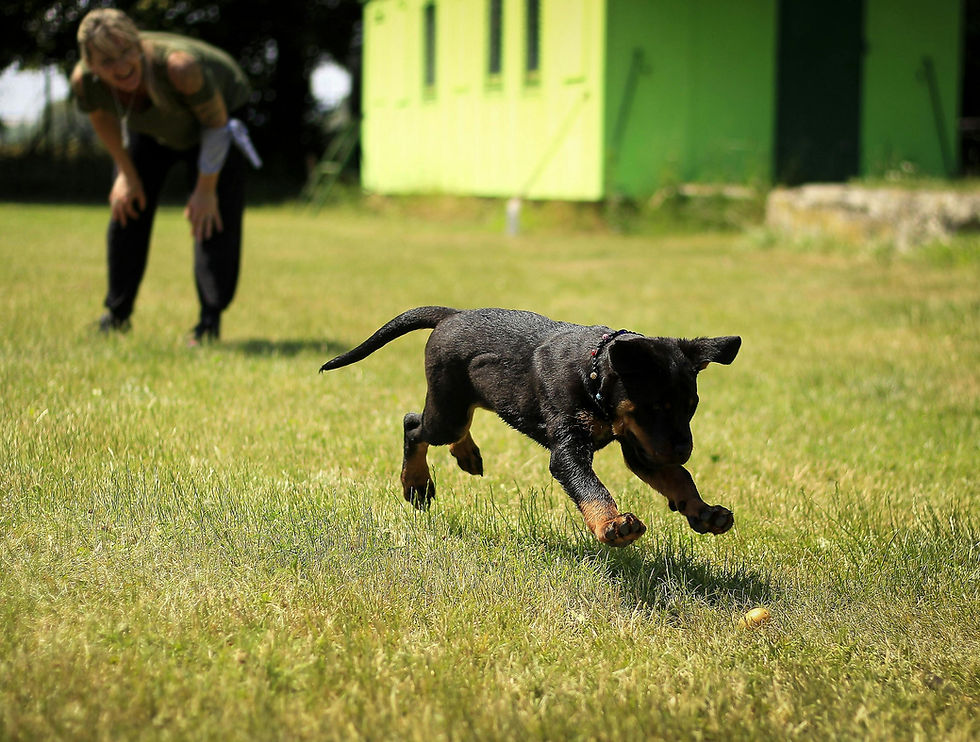Key Principles Behind Successful Dog Training Programs
- ma85023
- Aug 10
- 4 min read
Training a dog is about building a strong, respectful relationship that fosters understanding and cooperation between you and your furry friend. Successful dog training programs don’t rely on quick fixes or one-size-fits-all methods. They are grounded in proven principles that promote positive behavior, mental stimulation, and a lifelong bond. Whether you’re training a lively puppy or helping an adult dog overcome behavioral challenges, understanding the core principles behind effective training will set you on the right path. This blog post explores six key principles that form the foundation of successful dog training programs.

Consistency Is Key
One of the most important principles in dog training is consistency. Dogs thrive on routine and clear expectations, so maintaining consistent commands, cues, and rules is important. When you use the same word or gesture for a specific behavior every time, your dog quickly learns what you want. Inconsistent commands or allowing behaviors sometimes but not others can confuse your dog, leading to slower progress and frustration. Consistency applies to the responses your dog receives. For example, if jumping on guests is sometimes ignored and sometimes discouraged, your dog won’t know which behavior is expected. Keeping training sessions regular and predictable helps reinforce learning and encourages good habits.
The Value of Professional Dog Training
Professional dog training can make a significant difference in how well your dog learns and adapts to new behaviors. Experienced trainers understand canine behavior and use proven methods tailored to each dog’s needs. For example, many dog owners turn to services like Tip Top K9, which emphasize personalized training plans that focus on positive reinforcement and consistency. These trainers help address common challenges such as obedience, socialization, and behavioral issues with patience and expertise. By working with a professional, dog owners can gain valuable insights and techniques that foster a stronger bond with their pets and promote a happier, more balanced lifestyle for dog and owner.
Positive Reinforcement Builds Trust
Positive reinforcement is the cornerstone of effective dog training. It means rewarding desirable behavior immediately to encourage your dog to repeat it. Rewards can come in many forms, including treats, praise, playtime, or affection. This method strengthens the bond between you and your dog, making training enjoyable and motivating. Unlike punishment-based techniques, positive reinforcement focuses on what the dog is doing right, creating a supportive environment where your dog feels safe to learn and explore. Timing is crucial here: the reward must follow the desired behavior closely so your dog makes the connection. This approach fosters a willing and enthusiastic learner who looks forward to training sessions.
Patience and Realistic Expectations
Training a dog requires patience and realistic expectations. Every dog is unique, with different learning speeds, backgrounds, and temperaments. Some may pick up commands quickly, while others need more repetition and time. It’s important to approach training without rushing or expecting perfection overnight. Frustration or impatience can negatively affect your dog’s confidence and willingness to participate. Break training into manageable steps, celebrate small victories, and allow your dog to progress at their own pace. Remember, setbacks are normal and can be learning opportunities. By maintaining a calm and patient attitude, you create a positive learning atmosphere that benefits you and your dog.
Clear Communication
Effective dog training hinges on clear communication. Since dogs can’t understand human language as we do, it’s vital to use simple, consistent signals paired with tone and body language that your dog can interpret. Clear commands, combined with nonverbal cues like hand signals, help your dog know exactly what is expected. Avoid overloading your dog with too many commands at once; focus on one behavior before moving on to the next. Your tone of voice plays a role. Calm and encouraging tones invite cooperation, while harsh or inconsistent tones can cause confusion or anxiety. Establishing a clear communication system helps your dog feel secure and confident in training.
Socialization Enhances Learning and Behavior
Socialization is a critical element often integrated into successful dog training programs. Early and ongoing socialization exposes your dog to different environments, people, animals, sounds, and experiences in a controlled and positive way. This exposure helps prevent fear, aggression, and anxiety, promoting well-rounded and adaptable behavior. A well-socialized dog is more confident and better equipped to handle new situations, which makes training easier and more effective. Socialization should be gradual and carefully managed to ensure your dog’s comfort and safety, allowing them to build positive associations with diverse stimuli.

Successful dog training programs are built on a foundation of consistency, positive reinforcement, patience, clear communication, socialization, and mental and physical stimulation. By applying these principles, you create a nurturing environment where your dog feels safe, understood, and motivated to learn. Remember that training is an ongoing journey that strengthens the bond between you and your dog, leading to a happier and healthier life together. Whether you’re starting with basic commands or addressing specific behavioral issues, keeping these key principles in mind will guide you toward training success.



